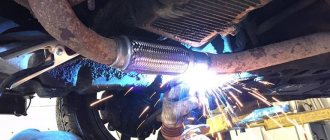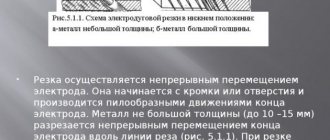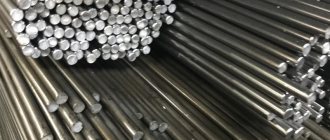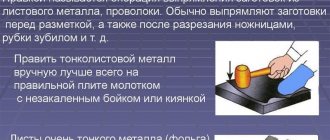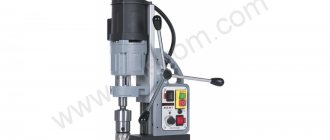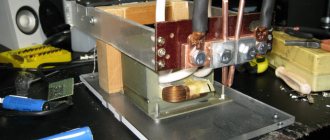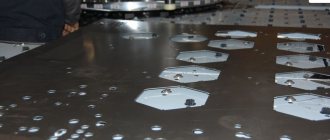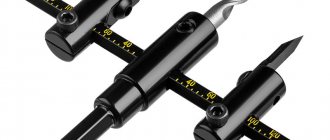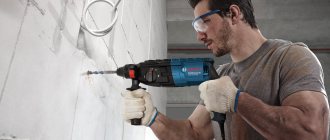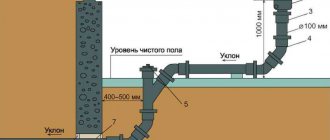general information
Many home craftsmen are accustomed to thinking that welding should be used only when two metal workpieces need to be connected. However, having a welding inverter and electrodes in your hands, you can perform not only welding, but also metal cutting. This technology is useful if you need to make a hole in a workpiece.
You don't need to be a professional to make a hole in metal with an electrode. It is enough to know the operating principle of the inverter and be able to apply it in practice. The cutting process is simpler and faster than welding, since there are no such high requirements for the quality of the seam. With practice, you can achieve a fairly smooth cut with neat edges. Therefore, cutting is suitable even for those who have never used a welding inverter.
Metal cutting by welding, welding machine, burning
Now let's speculate - what happens if we take an electrode with a diameter of 2 mm for a sheet of steel 2 mm, and set the current to about 100A, which usually corresponds to an electrode diameter of 3 mm? What will happen is that the electrode and steel will begin to actively melt and evaporate. The electrode will have to be supplied very intensively to the welding zone. You won't get any bath, but you will get the so-called. through burning. It seems like a nuisance, but let’s turn it into a good thing - we’ll start moving the electrode progressively, controlling the occurrence of burnout. And lo and behold, we cut steel! Moreover, in this way you can cut a fairly thick-walled sheet. Of course, the quality of the edges will be much lower than when cutting with an angle grinder (grinder), but this method is sometimes quite applicable when high demands on the quality of the edges are not made. The current for cutting metal is usually 25-30% higher than the current required for welding.
What should you have on hand?
To make a hole in metal, you must have an inverter, electrodes, as well as a hammer and a brush with metal bristles.
Inverters come in different types: cheap and expensive, professional and household, powerful and not very powerful. In essence, it does not matter which inverter you use for cutting. The main thing is that it is in good order.
As for electrodes, there is a wide choice. Previously, cutting was performed with the same electrodes as welding. But now there are many brands on sale that are designed specifically for cutting. They are all good in their own way. The most popular brand of cutting electrodes is OZR. They provide a more or less even cut and allow you to get the job done quite quickly.
If you decide to use conventional electrodes for welding, then be prepared that the cut will not be the most aesthetically pleasing, and the work itself will proceed more slowly, and the arc will burn unstably.
Is it possible to cut metal using electric welding?
Metal is widely used at construction sites, as well as during household and repair work. Consequently, there is a need not only for joining metal workpieces, but also for cutting them through electric welding.
The same question is often asked on welding forums and websites - how to cut metal with an inverter? Will a regular inverter handle cutting metal with electrodes?
Cutting metal by electric welding is possible only in cases where there are no special requirements for the quality of work. Of course, with this approach it will not be possible to make perfectly smooth edges and cuts, as is the case with an angle grinder.
However, with the appropriate experience and knowledge, you can still achieve smooth and even cut edges. To do this you need to adhere to the following rules.
We carry out cutting
Light the arc. This can be done in two ways: by tapping the end of the electrode on the surface of the metal or by striking it, as if lighting a match. The first method is easier. If you have never used a welding inverter before, we recommend starting with tapping.
Adjust the current on the inverter. The current strength is selected based on the thickness of the workpiece and the diameter of the electrode. We recommend that you first set the setting as if you were just welding, and then add about 30% more of the set amperage.
Next you need to mark the edges of the future hole. Use a chemical pencil for this. It's great for marking and is easy to see when cutting. If the hole is small (a couple of centimeters in diameter), then cutting can be done immediately. If there is a lot of work, then it is better to make the hole smaller and then gradually expand it.
Guide the electrode perpendicular to the workpiece. Do not tilt it too far when cutting. The process itself is very similar to regular welding, so you shouldn't have any difficulties.
Stages of electroerosive burning.
1
Breakdown of the spark gap, which occurs during the formation of a zone with a high electric field voltage.
2
Formation of a gas bubble from liquid and metal vapors at the site of the conductivity channel
3
Termination of the current, which leads to the separation of the shock wave from the gas bubble and its inertial expansion. This leads to a sharp drop in pressure inside the bubble. In this case, molten metal is released from the holes.
note
Although cutting is simpler than welding, it also has its own characteristics that need to be taken into account. We will list the main ones.
First of all, be prepared that this method of cutting metal is unlikely to provide a perfectly straight cut line. If you need an impeccable result, use plasma cutting technology. Cutting with electrodes is suitable for home use when quality is not so important.
When cutting thin workpieces, increase the amperage. If cutting electrodes are not available, welding rods can be used. But their use makes cutting a little more difficult. Some craftsmen use welding electrodes that are no longer suitable for welding work.
In essence, the type of electrode is not that important. What's more important is its diameter. Remember: the thicker the metal, the larger the diameter of the electrode. For thin metal workpieces, 3 mm electrodes can be used.
How to cut with electric welding
Every beginner and even an experienced welder burned through metal while welding. This is either due to a large current, or due to a very thin sheet, or due to both. Metal cutting is carried out using this property. It is most convenient to cut a sheet or product using manual arc welding, that is, an electrode.
Electric welding, of course, cannot cut metal like plasma, laser or grinder, but such cutting still exists and is used quite widely. It is mainly used where very precise cutting of metal . Cut off, for example, an extra piece of reinforcement or stainless steel. For such cutting, nothing is needed except electrodes and a welding machine. You can cut very thin and thick materials; the thickness of the metal being cut depends on the current strength. If you have a powerful device and strong electrical wiring, you can cut until the electrode in the holder melts.
Cutting thin and thick sheets occurs slightly differently. When cutting thin metal, the current increases, approximately twice as much as usual. The electrode should be closer to the workpiece and go deeper into the cut. It is as if excess metal is blown off by welding. Everyone can do this.
But getting the cut edges to be relatively straight takes practice. Thick sheets are cut almost the same way. The current is added depending on the thickness you want to cut. When cutting, you will need to blow through more thickness.
To do this, you will need to deepen the electrode into the molten metal, pushing it out until you can see that it has been cut all the way through.
When cutting metal by electric welding, old, unnecessary electrodes of the required diameter are usually used. If you are cutting thin metal, then an electrode with a diameter of 3 mm or three is quite suitable for you, and for a thicker sheet a four or five is required.
Plasma cutting services for various metals, as well as their alloys, are very popular. Plasma cutting makes it easy to cut stainless, carbon and high-alloy steel. We also often accept orders for plasma cutting of titanium, aluminum, brass, copper, bronze, cast iron and products that combine several types of alloys.
Excellent quality and fast order fulfillment are guaranteed by many companies providing similar services.
Metalworking services are also provided, and a wide range of metal products are produced according to customer drawings with the necessary equipment and a staff of craftsmen, whose qualifications allow us to fulfill orders at the highest level of quality in a short time.
When making or repairing metal products, it is often necessary to cut metal. Depending on the design and thickness of the parts, different methods can be used, but one of the universal ones is the air-arc cutting method, based on the use of ordinary welding equipment.
To do this, you only need to exceed the value of the welding current, and instead of forming a weld pool and seam, burn a hole due to the intensive melting of the metals of the electrode with the part.
cut metal using electric welding
This causes the weld metal to cool quickly. This negatively affects the quality of the seam. The seam is uneven, with scales and significant differences along the edges to the base metal. It is necessary to maintain such an angle that the liquid slag follows directly behind the electrode and is not displaced by the arc force.
(read more...) :: (to the beginning of the article)
Contents :: Search
Unfortunately, errors are periodically found in articles; they are corrected, articles are supplemented, developed, and new ones are prepared. Subscribe to the news to stay informed.
If something is unclear, be sure to ask! Ask a Question. . [4] messages.
'Since the polarity of the 'electrode-product' changes 50 times per second, this causes ...' mmmmmm, that is, you are not aware that the frequency of the alternating current is 50Hz, which does not mean a change of 0/phase 50 times per second?.. Or Do you also think that '+' is a flow of protons, and 'minus' is electrons? In general, I thought that the zero is connected to the product, and the phase is supplied to the electrode. Read the answer...
I myself have been working as a welder for 25 years. I can do everything, but I’m not very good at explaining. Now my son has decided to follow in his father's footsteps. I searched the Internet for material to learn the basics. And settled on yours. Thank you. Read the answer...
Inaccuracy in polarity: direct polarity part '+' electrode '-', reverse polarity respectively part '-' electrode '+' Read the answer…
I welded a frame for the door leaf, size 2.2x1.2 (m). How to properly weld a sheet (2mm thick) so that it does not “pull”. Read the answer...
More articles
Why does concrete crumble, crack, or deteriorate in the foundation, walkway,... The path and foundation were poured in the summer. After winter, serious damage is visible, observing...
Do-it-yourself garden bench at your summer cottage... Design of a garden bench. How to make a comfortable bench in your country house with your own hands...
Fence posts, DIY fences. Put up, install, dig in... Fence posts, fences. We will make a good support for the fence so that the fence will last...
Why us?
Nevsky Tool Plant offers electroerosive burning of holes in St. Petersburg and Russia inexpensively. Our company is a team of high-class professionals. The plant is equipped with modern technological machines, the use of which allows us to painlessly maintain affordable prices for our services. The use of electrical discharge burning makes it possible to solve complex technological problems aimed at manufacturing parts of complex configurations. The use of the technologies we offer allows us to optimize the metal processing process; when working with clients, we follow four unshakable principles: quickly, efficiently, accurately and inexpensively.

